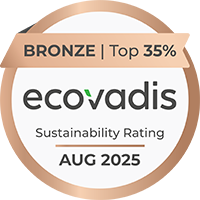When uncertainty prevails it can be difficult to know what to say. It’s tempting to delay saying anything until we know more, until we have all the facts. We want to convey the right message, to be as accurate as we can be. We are fearful of getting it wrong, of making it worse, of increasing the anxiety… and so… we hold back, we run silent.
We are well intentioned and yet… we serve no-one with our silence. Not us and not the individuals, teams or organisation we lead.
Anecdotally we know that ‘not knowing’ creates greater levels of anxiety in people than knowing, even if the news is bad. A study1 conducted at the height of the COVID-19 pandemic backs this up. Researchers studied people awaiting test results to establish if they had the virus. “From our analyses we saw that uncertainty was more strongly related to greater anxiety than even having the disease.”
In their 2021 survey2 the AADA (Anxiety & Depression Association of America) found that workplace stress and anxiety affects life at work and at home.
Here is an excerpt from the article:
It is often is better to say something. Even if we don’t have all answers it can be better to tell people what we do know… and here’s one powerful method for shaping the message.
The Tell Them Protocol
The method is a simple one. Shape the message under these four headings:
- Tell them what you know
- Tell them what you don’t know
- Tell them how you feel
- Tell them what you propose we do
It’s important to take ownership for the messages and not to lay blame elsewhere e.g. Senior Leadership or predecessors. Beware also of the ‘I’m sure everything will be fine’ approach, where we attempt to soften the news.
Here’s an example with extra insight in italics under each section.
Tell them what you know
"The economic climate is not good. As you know inflation rates are high and rising. Many organisations in our sector are cost cutting and making redundancies. Our numbers are also down. We have some reserves and are not planning redundancies at the moment. We will revisit this at the end of the next quarter. There will though be no pay rises or bonuses paid this year."
This should not be a long list. Three or four sentences should suffice.
Tell them what you don’t know
"I do not know how long trading conditions will stay like this. I do not know if we will have to make redundancies later on next year and I do not know how long pay freezes will remain."
Ideally highlight the things you believe they will be anxious about.
Tell them how you feel
"I feel frustrated that we are where we are, I’d thought everything would look brighter post-pandemic. I feel sad for those of you who were counting on pay rises. I know the cost of living is going up and this will impact on you and your families. And I feel hopeful we can pull through this, we have a great team and great products."
Two or three feelings is about right. Normally ending with a positive one. E.g. determined, excited or committed. Note – these feelings must be genuine. People are hard wired to spot inauthenticity, they are even more sensitive if they feel under threat.
Tell them what we’re going to do about it
"Here’s what I suggest we do. We believe that we can pull through this situation, as we have the ones before. We focus on executing the plan, we up our collaboration and we support each other. Let’s revisit our individual teams goals next week and ensure we’re doing all we can to enhance customer relations."
Identifying where people should invest energy will help focus them and remind them they can have a positive impact for themselves and those around them. Be explicit wherever possible.
MF’s Phil Hayes shared this approach with me many years ago. He’d witnessed a leader deliver a short and inspiring speech. It was a speech delivered when they were far from clear on all the facts. It had a positive impact on morale and performance, to the extent that Phil later deconstructed the speech and establish the ‘Tell them protocol’. I’ve since shared it with hundreds of leaders. Many report it being a very useful and practical support.
I hope you’ll also find it useful, and feel even more able to tell them what you know ahead of the holidays…
References:
1. Levine L, Kay A, Shapiro E. The anxiety of not knowing: Diagnosis uncertainty about COVID-19. Curr Psychol. 2022 Feb 3:1-8. doi: 10.1007/s12144-022-02783-y. Epub ahead of print. PMID: 35132299; PMCID: PMC8811589.
2. Anxiety & Depression Association of America (2021) Highlights: Workplace Stress & Anxiety Disorders Survey







